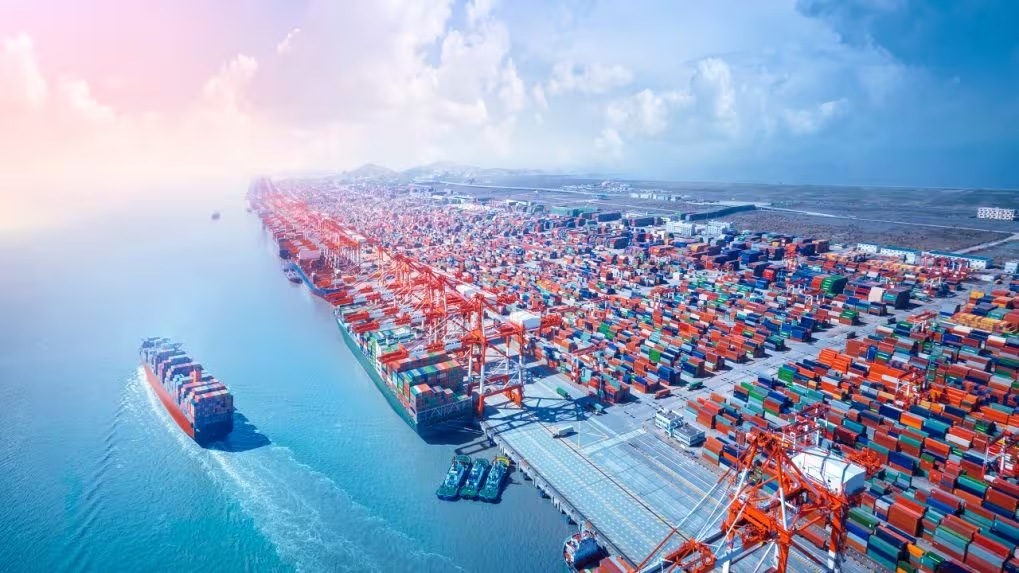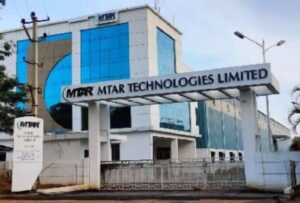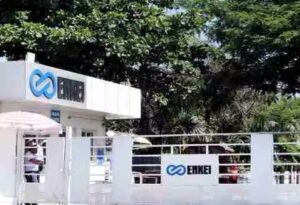1. At a Glance
Gujarat Pipavav Port Ltd (GPPL), India’s first private port, just dropped its Q2FY26 numbers, and boy, the ship’s sailing smooth. With quarterly revenue at ₹299 crore and profit after tax of ₹158 crore, this port is doing what most logistics startups only dream of — minting cash while distributing100%of its profits as dividends. The company announced yet anotherinterim dividend of ₹5.40 per share, making dividend hunters happier than a sailor at shore leave.
At a market cap of ₹7,869 crore and a P/E ratio of18.3x, GPPL trades cheaper than its big brother Adani Ports (26x) and way more relaxed than JSW Infrastructure’s aggressive 38x. It’s nearly debt-free (Debt: ₹50.6 crore, D/E = 0.02), sits on a juicyROCE of 24.9%, and boasts adividend yield of 5.04%— the kind of combo that gives even seasoned investors FOMO.
The company reported31.8% YoY growth in quarterly salesand37.8% surge in profit, proving that while most ports drown in capex and debt, GPPL prefers chilling with free cash flow and fat margins. Operating Profit Margin (OPM)? 58%. PAT Margin? 40%. In a world of chaos, Pipavav is Gujarat’s Zen port.
2. Introduction
Welcome to Gujarat Pipavav Port Ltd — India’s first private port and arguably the calmest overachiever in logistics. While others shout about “port-led growth” and “multi-modal synergy” in investor decks, GPPL quietly moves cargo, earns fat margins, and mails dividend cheques like clockwork.
Born out of a partnership between Gujarat Maritime Board and APM Terminals (part of the mightyA.P. Moller-Maerskempire), Pipavav is strategically located near Bhavnagar, perfectly placed on the international maritime trade route that connects India with the US, Europe, Africa, the Middle East, and the Far East.
Its container volumes are rising again —179,000 TEUs this quarter,up 33% QoQ— while dry bulk volumes are still recovering post-fertiliser slowdown and coal suspension. But unlike other ports that panic when a cyclone hits, Pipavav rebuilds, files the insurance claim, and gets back to work — literally what it did after Cyclone Tauktae in 2021.
So, what’s the secret sauce? Three words:Maersk, Efficiency, and Discipline.GPPL’s Danish parent brings in tech, systems, and cargo flows, while the management sticks to a “no debt, all cash” philosophy. Result? This ₹7,800 crore company has an Enterprise Value of ₹6,927 crore — meaning the market is practically paying you to take its cash flow.
3. Business Model – WTF Do They Even Do?
Think of GPPL as a toll booth for global trade, but instead of honking trucks, it handles container ships, bulk cargo, and car carriers.
Here’s the breakdown:
- Container Cargo (60–70% of revenue):The backbone of the business. Handles 1.35 million TEUs per year. Customers include Maersk Line — which alone contributes ~23% of total revenue.
- Dry Bulk:Handles fertilisers, coal, and minerals (capacity ~4–5 million MT). But the segment has seen turbulence, with coal handling temporarily suspended.
- Liquid Bulk:Capacity ~2 million MT. And soon to expand — aUSD 90 million new liquid berthis under construction, expected completion by December 2025.
- RoRo (Roll-on/Roll-off):Cars, trucks, and other vehicles — handled using container berths.
Unlike PSU ports that rely on bureaucratic blessings, GPPL operates under aconcession agreement with Gujarat Maritime Board until 2028, with ongoing discussions for extension.
The port’sAEO (Authorized
Economic Operator) certificationensures faster customs clearance — meaning less waiting, more cargo churn, and happier clients. It also sits right next to the Western Dedicated Freight Corridor, which lets containers zoom inland faster than government paperwork can travel across an office desk.
4. Financials Overview
| Metric | Latest Qtr (Sep’25) | YoY Qtr (Sep’24) | Prev Qtr (Jun’25) | YoY % | QoQ % |
|---|---|---|---|---|---|
| Revenue | ₹299 Cr | ₹227 Cr | ₹250 Cr | 31.8% ↑ | 19.6% ↑ |
| EBITDA | ₹178 Cr | ₹133 Cr | ₹148 Cr | 33.8% ↑ | 20.3% ↑ |
| PAT | ₹158 Cr | ₹92 Cr | ₹101 Cr | 71.7% ↑ | 56.4% ↑ |
| EPS (₹) | 3.27 | 1.89 | 2.08 | 73.0% ↑ | 57.2% ↑ |
Annualised EPS = ₹3.27 × 4 = ₹13.08→ P/E = ₹163 / ₹13.08 ≈12.5x.
That’s cheaper than its reported TTM P/E (18.3x), implying that if Q2 momentum sustains, Pipavav could rerate faster than cargo turnaround time.
Commentary:When your EBITDA margin sits above 58%, your debt is practically zero, and you still pay 100% dividend payout — congratulations, you’ve achieved enlightenment in Indian logistics.
5. Valuation Discussion – Fair Value Range
Let’s get nerdy.
(a) P/E Method:TTM EPS = ₹9.56Industry PE = 26.3xCurrent P/E = 18.3xFair range (assuming re-rating closer to peers):= ₹9.56 × (18x–26x) =₹172–₹249/share
(b) EV/EBITDA Method:EV = ₹6,927 CrEBITDA (FY25) = ₹621 CrCurrent EV/EBITDA = 11.15xIndustry range ~9–14xFair range = ₹6,621–₹8,694 Cr → Equity value per share =₹137–₹180/share
(c) DCF (Free Cash Flow based):Average FCF (last 3Y) = ₹440 CrAssume growth 6%, discount rate 11%= ₹440 × (1.06)/(0.11–0.06) = ₹9,328 Cr → ₹193/share
🎯Fair Value Range (Educational): ₹170 – ₹200/share(Disclaimer: This range is for educational purposes only and not investment advice.)
6. What’s Cooking – News, Triggers, Drama
- MoU with Gujarat Maritime Board (Oct 2025):GPPL signed a ₹17,000 crore MoU for port expansion, subject to concession extension beyond 2028. Translation: they’re ready to play the long game if the government says yes.
- ONGC Contract (Sep 2025):Awarded a five-year port and storage contract — expect stable, sticky revenue.
- Interim Dividend (Nov 2025):₹5.40/share announced. That’s ₹261 crore cash returned

















